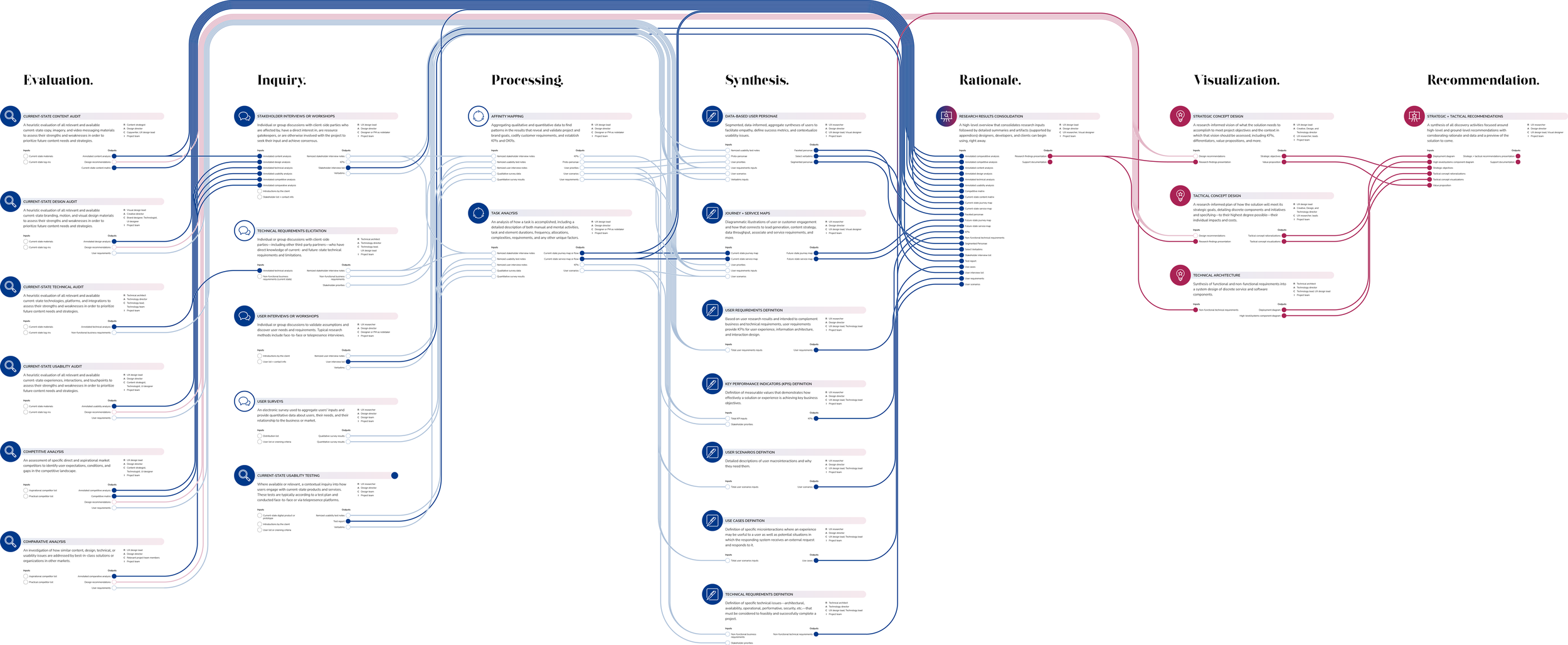
Our unique processes
Experience Transformation.
One process. Any challenge.
Experience Transformation is Sharpen’s proven and repeatable process for elevating both the user’s experience and the business’ results through the rigorous application of design-thinking principles and an omnichannel approach to tactical execution.
It’s pretty cool.
Our process does more than simply improve the usability or desirability of a solution. Through empathy and analysis, we elicit the most valuable user and stakeholder data. And by creatively prioritizing these validated user needs within existing technical or business constraints, time and time, we’ve again elevated solutions to a level of indispensability that have dramatic impacts on how businesses are able to meet and exceed user needs.
Maslow’s Hierarchy of Need informs how we look at product health and market potential. Typically, this hierarchy caps out with “overdelivery” (or some synonym). But our point of view is that there’s further room to climb beyond simple innovation or disruption. That if you let user needs lead and adapt your business and requirements to suit, your business may reach that rarest of peaks—indispensability.
How Experience Transformation works.
At Sharpen, we’re not as experts in a particular industry. Rather, we’re experts in a process. A process that works for nearly any client in any industry to solve for any problem: exploring both business and user needs to clarify the competitive space, validating requirements, defining success metrics, and facilitating a shared vision of an innovative solution at both strategic (high) and tactical (low) levels.
Experience Transformation combines activities, their inputs, their outputs, and their relevant RACI roles (who’s responsible, accountable, consulted, or informed) and organizes them into seven discrete stages which can easily be divided among the team and into agile-ish sprints.
The seven stages of experience transformation:
Evaluating current-state materials, competitors, and comparable solutions.
Inquiring of stakeholders and users.
Processing these data.
Synthesizing actionable deliverables, corresponding to the needs of the project.
Presenting a consolidated, data-informed rationale describing how to move forward.
Visualizing what the proposed solution looks like.
Recommending strategic and tactical next steps, in the client’s language, so everyone involved understands how to move forward and how to transform the user experience.

How long does the Experience Transformation process take?
Sharpen’s Experience Transformation process typically takes a team of two-to-four veteran designers about twelve weeks to complete. Six consecutive sprints, in an agile-ish framework.
Of course, teams and timelines can scale up for more complex work or down for more tactical projects. For instance, A consumer e-commerce app and an enterprise business-intelligence tool operate at dramatically different scales with wildly different user types and stakeholders, yet Experience Transformation accommodates both with equal aplomb and transformative results.
Let’s begin your Experience Transformation.
We’re excited to show you how Sharpen’s premier team of creative problem solvers (with their fingers on design thinking, technology, architecture, and more) is the right team to help you. Because we do a lot more than just create beautiful, functional solutions—and that “lot more” informs how we approach every problem.
Contact us for a free remote consultation with our innovation leaders to see how we can help you and your company bring your visions to life and be more innovative than ever.
“We garnered a 90% adoption rate in the first 30 days after launch,
serving 40,000 unique users, and helping associates meet or exceed their NPS targets and win JD Power’s 2019 Business Wireline Satisfaction award for Large Enterprise Business.”


